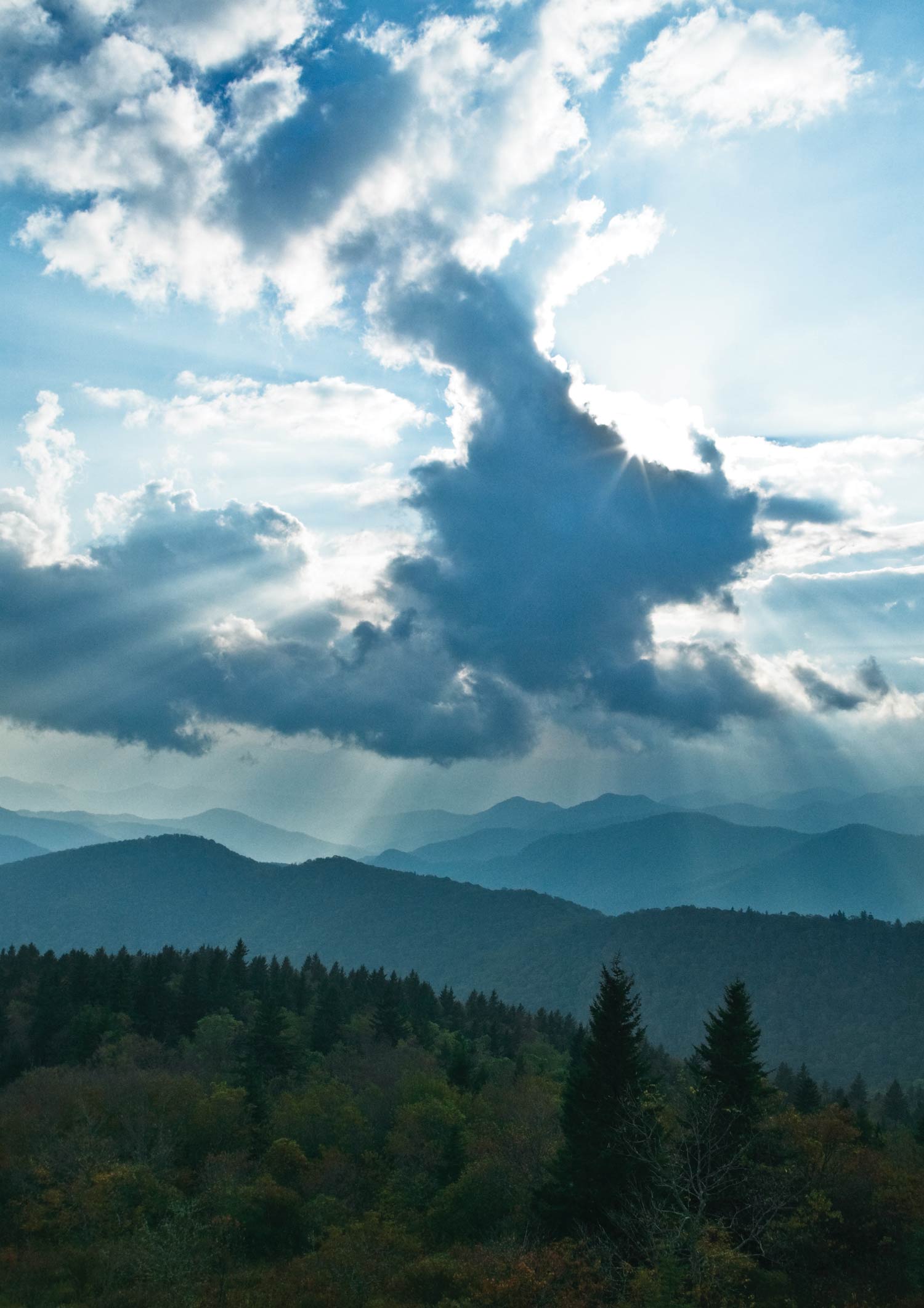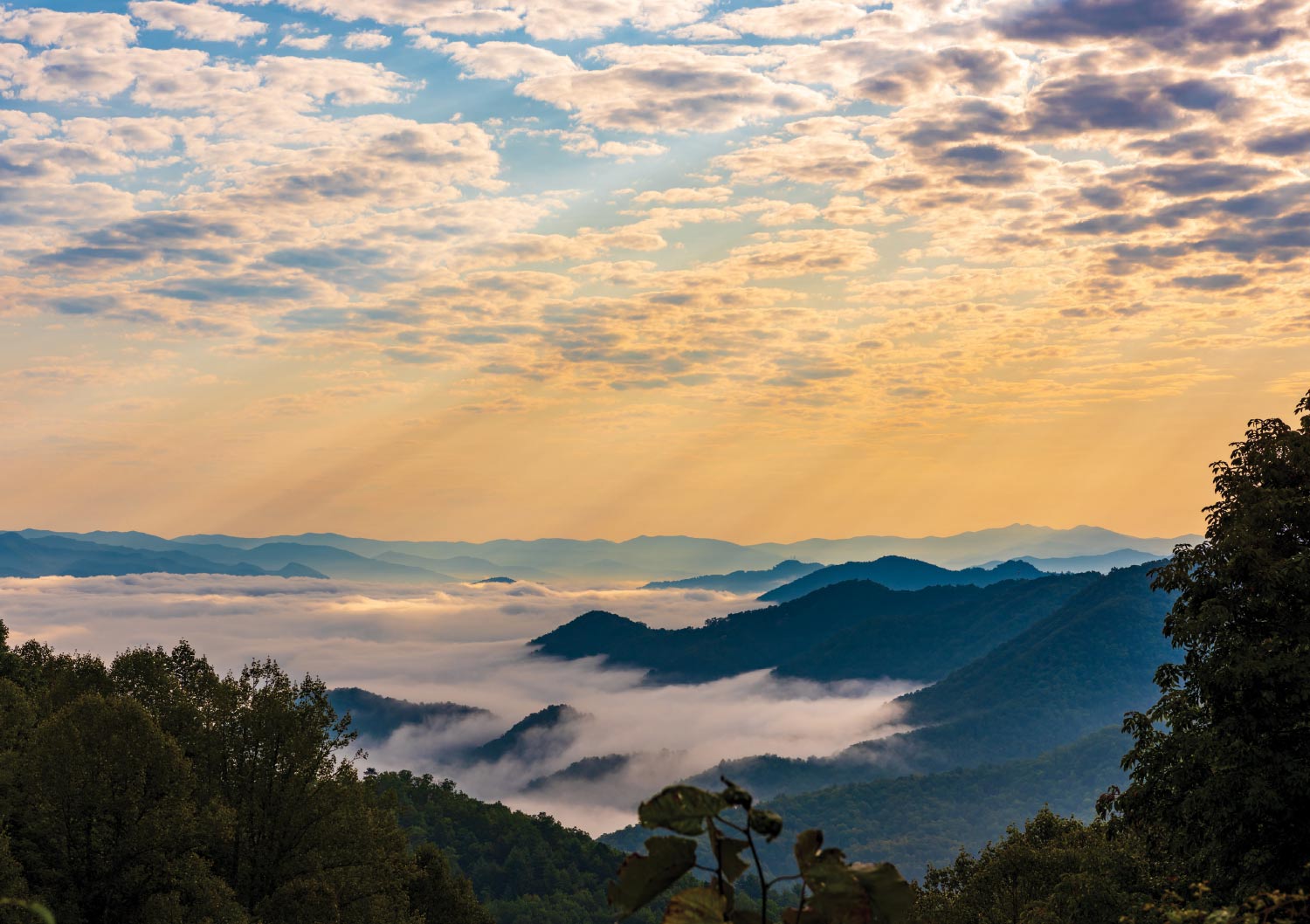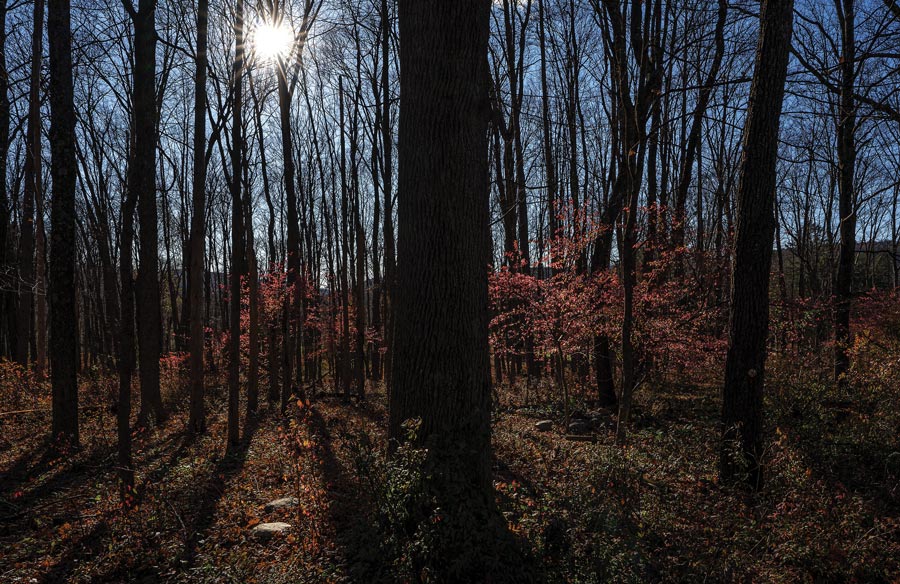
The morning is crisp and the clouds are thick but breaking as we traverse this section of the Trail. We make good pace as this portion is mostly level with only a couple of moderately steep climbs. As we walk, we spend time making fun of each other, catching up on community news and tribal politics while patiently looking for any signs of wisi. This delicacy continues to be one of the most coveted foods of Cherokee people and we are in an intense search for our first harvest of the year. As we log a couple of miles, Devyn and I are struggling to keep up. Gill is a prolific hiker, having completed the A.T. in 2016, and he seems to glide atop the Trail while using Cherokee words to name plants, trees, colors, and an animal or two. With only 200 or so fluent EBCI Cherokee speakers remaining, words are precious. Gill graciously teaches us names in the language and we recite, desperately trying to remember.
Like the language, the harvesting of plants and wild foods is a knowledge bounded to the land. One of the many results of the forced removal and genocide of thousands of Native Americans from the southeast U.S. was that of rupturing Indigenous peoples from their food systems. While many families have held onto that knowledge, others still are looking for a way to reclaim those cultural practices that center us in who we are. Thus, this search is not simply about looking for wisi but is also an act of resistance, resilience, and reclaiming. Finally, three miles into our journey, we catch a glimpse of the most beautiful wisi we have ever seen, right off the Trail at the base of a dead oak tree. We are exuberant as we all claim to have been the first to see it. We laugh, we give thanks, and we acknowledge the special relationship and responsibility we all have to the land that provides so much.
Land acknowledgement at a base level is a recognition that you are on the lands, for various purposes, of an Indigenous people.

– By Jerry Greer
Our primary source of spatial data in creating the A.T. Native Lands Territory map originated from Native Land Digital (native-lands.ca), whose friendly and accommodating team pointed us in the direction of their publicly available application programming interface, which allowed access to their raw GIS (geographic information system) data. Simple analysis allowed the map to highlight relevant Native Nation’s traditional territories along the Trail, while preserving careful attention to detail. The tool used in this process was ESRI’s ArcGIS Pro.
During the creation of this map, collaboration with the team at the Appalachian Trail Conservancy (ATC) was paramount. Guidance from ATC’s GIS specialist, Josh Foster and director of outreach and education Julie Judkins allowed the creation of the map to be a seamless and enjoyable experience. Most importantly, Victor Temprano, founder of Native Land Digital, was the point person who led me to their open spatial data. GIS and cartography cannot carry out what they do without the cooperation of those who maintain data.
Lands Territory Map creator


For the Appalachian Trail Conservancy (ATC), which oversees the management and protection of the A.T. that runs through 22 Native Nations’ traditional territories, including a portion of the EBCI’s current boundary lines near Stecoah Gap in southwestern North Carolina, acknowledging the original peoples is appropriate.
A formal land acknowledgement can be one possible way to confront the legacy of displacement and genocide that led up to the creation of the A.T. As a bureaucratic, institutional practice, land acknowledgements have been practiced in Canada, Australia, and New Zealand for decades before more recently migrating into U.S. institutions such as universities, nonprofits and into art communities to name a few. In Australia, these performative acts are also known as “Welcome to Land” ceremonies, believed to be adapted from the Māori pōwhiri, a ceremony to welcome visitors that includes speeches, singing, a gift to the host and the pressing of noses (hongi). In the United States, practices of acknowledgement are often recited by a non-Indigenous person at the beginning of events, embedded within institutional documents and in some cases have multiple modes of visualizing the acknowledgement formally via posters, plaques, signage, well-crafted web pages, and other types of promotional materials.
There is no one-size-fits-all land acknowledgement as the template and language inevitably varies. However, establishing practices of land acknowledgement can be a powerful way of showing respect, countering colonial practices and narratives like the doctrine of discovery, and initiating ongoing action through reciprocal relationships. For some activists and academics, acknowledgement is the first step in decolonizing institutional practices that furthers a settler-colonial agenda. Others argue still that unless there are serious conversations around land rematriation then an acknowledgement is simply a move to innocence rather than a call to action.

Fortunately, there are some tremendous online resources for those wanting to develop a land acknowledgment statement for their institution or community. Native Land Digital is a Canadian nonprofit organization that is Indigenous-led, with an Indigenous executive director and a majority Indigenous Board of Directors. They have created an interactive digital mapping project of Indigenous lands that also includes a territorial acknowledgement guide. The Native Governance Center is a Native American-led nonprofit organization located in St. Paul, Minnesota, which has created online tips for creating an Indigenous land acknowledgement. They also offer other factors to consider including thinking about who should be delivering the statement and understanding issues of displacement. The art and maps they have created around their own statement are particularly inspirational. The U.S. Department of Arts and Culture created, in partnership with Native allies and organizations, a downloadable #HonorNativeLand guide to provide step-by-step instructions on how to produce a statement and provides tips for moving beyond acknowledgment into action. In terms of how to deliver one, Laurier Students’ Public Interest Research Group provides some guidelines to follow, including providing a formal thank you to the host nation whenever making a presentation or holding a meeting, whether or not Indigenous individuals are part of the meeting or gathering.
Moving from acknowledgement to action is no easy task but a necessary first step is to begin developing meaningful relationships with the Indigenous communities that were impacted. This involves being willing to listen to the concerns and voices of the community members. What should the ATC’s responsibilities be, and to whom, as current stewards of the land? What current issues are impacting specific Indigenous communities with historic connections to Appalachian Trail land and how can the ATC be a viable partner? These might lead to uneasy and uncomfortable conversations…and that can be a good, necessary point of reflection for future generations.
Acknowledgment
Matters
Where I live in the Wallowa Mountains and Hells Canyon area of northeast Oregon, which is one of the wildest places left in the lower 48 states, the Nez Perce (Nimiipuu) and other Plateau Tribes have called the region home since human footsteps first tread there. One of the oldest known village sites in the U.S. is in the Nimiipuu homeland, which was recently dated at about 16,000 years old. (The glaciers melted off there about 17,000 years ago.) The Plateau Peoples have had an intimate relationship with that land for millennia. Every member of its ecological family is documented in tales told to their children on long winter nights. Their oral traditions are a priceless archive of its diverse ecologies and natural processes. By remembering to heed the lessons of those who came before us, perhaps we can better understand how to preserve our experiences with the natural world for those who come after.



For Indigenous people who’ve been separated from our homelands, no small part of the concept of land acknowledgement is our need for physical reconnection to the land. A common belief among Indigenous people is that we cannot actually “own” the land, but rather that we are its familial caretakers. Our homelands are an extension of our families. So how can non-Indigenous Americans do more than acknowledge the land they are on? Obviously that would start with doing anything one can to help Indigenous people protect and return to our homelands and maintain connection to our families. And as countless millennia demonstrate, we are the most suited to care for those lands sustainably, which can then further serve all people who care about those lands along with us. There are many other things you can do to help to give back beyond land acknowledgement — such as helping to educate and encourage others to care about Indigenous issues. For myself, I try to be a helpful friend to the people whose homelands I’m a guest in. That’s one reason the first thing I did when I returned to Oregon was to help my dear friend Kanim Moses-Conner, (Chief Joseph’s GGG grandnephew), with a subsistence treaty rights hunt to feed his family and Elders. Packing heavy but sacred sustenance out of snow-covered mountains to help sustain a community that has sustained itself and the ecology that way since time immemorial, is rewarding but strenuous work. So, if I can offer my hosts some “rent” in the form of manual labor, (and getting to tag along for a wonderful adventure in one of America’s wildest places), then I am happy to do it. That’s what land acknowledgement means to me.